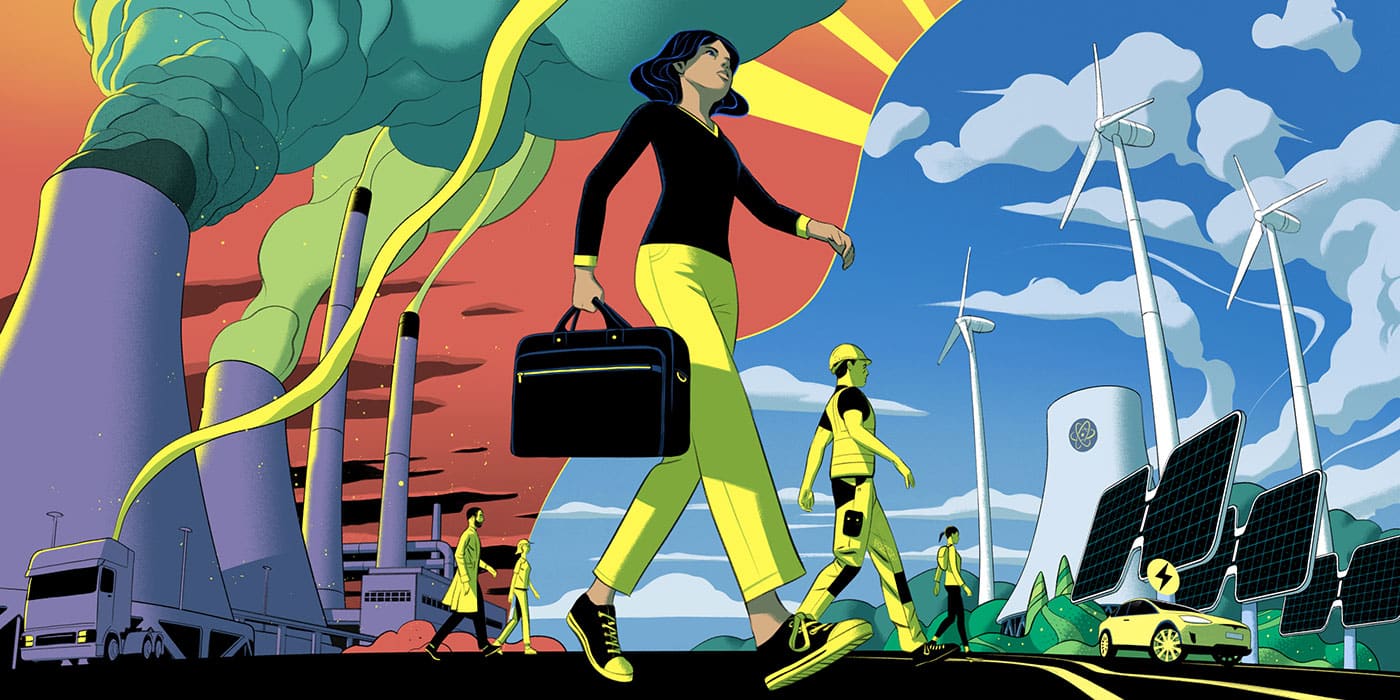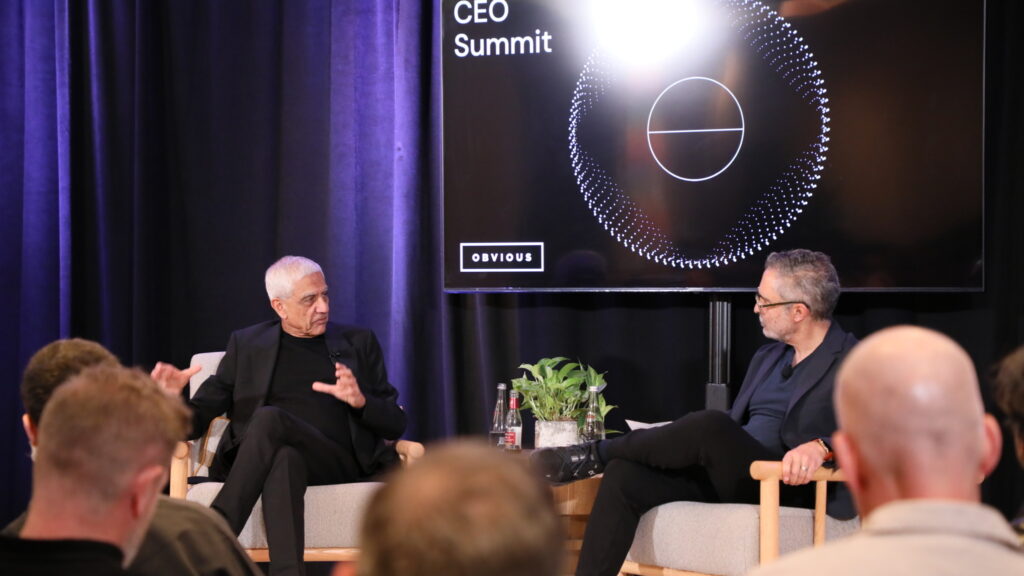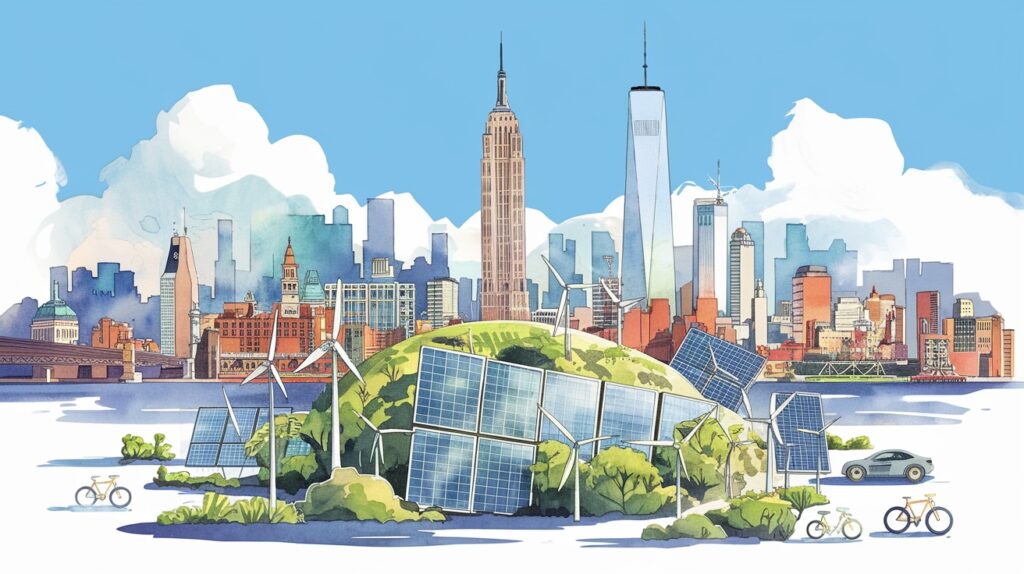The Climate Bill’s Hidden Win
Andrew Beebe |

The climate bill, or the Inflation Reduction Act in DC-speak, represents a sea change in American climate policy. The financial impacts on climate funding have been well-reported, but the scale is not to be missed. If you add in the spending from the CHIPS Act and the Infrastructure Investment and Jobs Act, we’re looking at greater than $80B per year in spending that simply didn’t exist a few months ago.
But there’s an even bigger knock-on effect from the climate bill that has gone largely underreported: It’s a story about jobs, nine million of them, to be exact.
What follows jobs? Votes.
Twenty years ago, when I started working in solar, there were a few thousand people in the industry — mainly researchers and workers at a couple of small plants. A decade later, that number shot up to nearly 100,000 workers, according to the National Solar Jobs Census. Today the number is more than a quarter million.
In that same timeframe, the number of workers in the U.S. coal industry dropped in half from 86,000 to 42,000.
It’s no coincidence that during that 20-year period the solar industry grew up, created a strong lobbying presence in DC, and became a force of further change. With more than five times the number of workers in solar vs coal, it should surprise no one that our energy transition accelerated. Solar workers and customers of their own rooftop solar got active, lobbied their statehouses, and voted.
Even the large energy companies who realized they could win with large-scale wind and solar projects got in the game.
In short, we made a professional transition and created a community of very active voters and campaign contributors who care deeply about their jobs. And that’s precisely what is about to happen again for vehicle electrification, home electrification, and retrofits thanks to the climate bill.
How will this happen?
First, the $370 billion investment in clean energy outlined in the bill will turbo-boost our energy transition leading to the creation of a much larger clean economy workforce. Second, we are also going to see a major climate tech demand increase with customers buying electric vehicles, and electrifying their homes—think batteries, electric kitchens, electric heat pumps, and solar on the roof.
The impact of all this is going to be a greening of the voter base, left, right, and center. All of these folks — whether they are in a world positive job they are really excited about or transitioning their home to an all-electric future — are going to take part. This type of recruitment of employees on a battery line or homeowners with a tax credit is not a partisan one. It’s about jobs and safer, lower-cost, and more resilient homes and vehicles.
Last month, Honda and LG Energy Solution announced a $4 billion investment in a U.S. battery plant. This is in addition to about a dozen battery factories already in the works by automakers and their partners in states including North Carolina, Ohio, Indiana, Alabama, Michigan, Tennessee, Kansas, and Oklahoma. The stories are incredible. These are the great manufacturing jobs America wants and needs.
What this means for founders
We will have increased consistency of market signals for anything that involves the transition to electric, energy efficiency, and carbon removal. We now have a lot more stimulus for cutting-edge technologies and things like carbon capture that were considered fringe just two years ago. We are also going to see a lot more consistency in demand, just like with the solar industry. Fifteen years ago, many questioned whether the solar industry was going to make it. Today, there is no doubt.
But the big news here is that we can more easily predict that DC and the states are just getting warmed up. As with solar before it, there’s now just too much at stake — too many jobs in EV production, too many jobs in battery factories, and too many jobs in home electrification. What politician wants to fight that momentum? A few months ago, there were many. Now there are fewer. As this money starts to flow, there will be fewer still.
As with the coal-to-solar transition before, we will now see the gas-to-EV transition take hold. But this time, the workers affected will be in the millions. Those workers will stand up for what’s working for them. They will lobby, they will organize, and they will vote. If history is any guide, this should lead to faster, bigger changes ahead.



